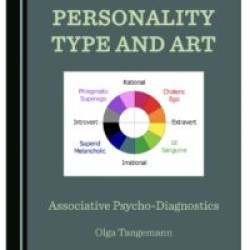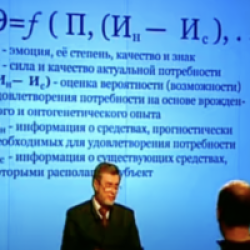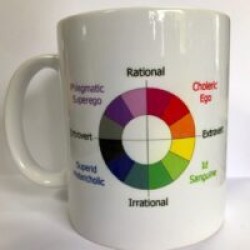Reviewed by Dmitri:
“Your analysis appeals to me a lot. Schools are looking for markers in the speech by paying attention to the semantics and language aspects, but I like your method of “mine / not mine”, which I use, but not as systematically as you.
I do not trust the style of speech and the content of speech because it depends on my mood and recently I experienced the impact of any person (the writer or parent) can change my style of speech. The inner understanding of “mine / not mine,” in my opinion is much more reliable and easier to understand for the person who is going through type diagnostics, while the semantic analysis is susceptible to error even by experienced socionists . ”
Non-verbal preferences:
Likes: The paintings are rational, static and introverted. Profile TPE – introverted, Superego – Superid.
First and third pictures are ethics and intuition, sixth picture – intuition. The fourth picture is bright, but is a typical image for TPE Superego and intuition, despite the fact that the image is very detailed . Two dark images can be attributed to Superid. TPE Ego can be attributed to a picture of a red flower.






Dislikes: Pictures are all s irrational – all three pictures and extraverted – the first and third picture. Denied sensation – the first and third picture.



Music preferences:
1. Микаэл Таривердиев-“Любовь-слепа, и нас лишает глаз…”
https://www.youtube.com/watch?v=UAVsad5s0dc
2. любэ конь прям мурашки везде хор девушек 1
3. Лунная Соната
Diagnostics of Dmitri’s type conducted on the basis of his responses to O. Tangemann’s the survey.
At the beginning of the video Dmitri said that he believes his type is EII, while the tests are usually point to LII type. During the diagnostics it was confirmed EII type- subtype IEI, Intuitive EII. TPE profile is introverted: superego- superid.
To confirm the subtype I offer either to choose the TPE subtype by description, take a subtype test or to submit materials ( non-verbal preferences) for subtype diagnostics. All of these approaches are used to identify a subtype.
Before you can see for themselves his video, I suggest you check math of my analysis of the client’s self-typing – his choice of strong and weak functions. Imagine that Dmitri is your client, who reflect on the functions (informational aspects) placing them in the following order ( strong, neutral, weak). What conclusions about his type would you make on the basis of his self- typing?
Logic – Intuition – Sensory – Ethics
1.My functions: Fi3, Ne3, Si3
2. Not my function: Se-1, Te-1, Fe-1
3. Not sure: Ti2, Ni2
Model A for EII – INFJ ( Dostoyevsky). The Humanist. The ethical intuitive introvert
Program – Fi Fe – Restricting
Creative – Ne Ni – Background
Vulnerable – Se Si – Mobilizing
Role – Ti Te – Suggestive Role – Ti
Part 1: Profile TPE
Analysis of verbal preferences of the client I start with the identification of TPE-profile and the leading energy which is associated with the basic four groups of typology. This means that the functions are evaluated from the perspective of 3 dichotomies: statics- dynamics, extravertion- introversion and rationality – irrationality.
In “my function” category are leding static function Fi3 +Ne3 against Si3 (6: 3)
In the categories “My functions” and “In question” are leading also static function: Fi3 + Ne3 + Ti2 against dynamic functions Si3 + Ni2 (8: 5).
We can assume that in the mental models of Block A located statics function: Fi3, Ti2 and Ne3 (8).
There are 3 extraverted functions in denial: Se-1 , Te-1, Fe-1 and two of these functions are dynamic: Te-1 and Fe-1. In the categories “Not my function” and “Not sure” are also mainly dynamic function: Te, Fe, Ni versus static Se and Ti (4: 3).
The prevailing energy is Superego (static, introversion, rationality) and deniedis the energy of Ego (dynamics, extravertsion, rationality).
Two other types of energy Id and Superid are distributed approximately equally with a slight preference of TPE Superid: Si3 + Ni2 versus Ne3 +Se-1 (5: 3).
TPE profile for all types of energy is as follows: Superego –Superid – Id -Ego. This means that the client’s profile is introverted.
Conclusion 1: The analysis of preferences has confirmed the client’s belonging to the group of Superego- types, which include following types: LII, LSI, ESI and the type of the client – EII.
Part 2. Functional profile
Logics
Revealed discrepancy in the evaluation of logics. In the first part of the questionnaire logics hit the priority position ( strong), while in the second part of the questionnaire aspects of logic were evaluated as “not mine” and “not sure”.
Introverted logic Ti “not sure” was evaluated by the client slightly higher than the extraverted logic Te “not my function”. For type EII it is natural, because Ti is located in the conscious block of the Model A which is called “mental” block. Te – extraverted logics is located in the subconscious block called “vital” block in Model A. Te fits well for the position of suggestive function for the model A of EII type.
Intuition
Client consistently praised his intuition as a strong function in the first and second parts of the questionnaire: Ne3 + Ni2 . Preference is given to Ne, which must be located in his mental block and Ni fits well for the position of the background function in the vital block of model A for EII.
Ethics
Revealed discrepancy in the perception of the ethics. In the first part of the questionnaire, this function fell into the category of the third position which does not describe the function as strong but neutral or “not sure”.
In the second part of the questionnaire Fe-1 is denial but a function of the introverted ethics Fi3 has been identified as a strong function – “my function.” This distribution of the ethic functions in the second part of the questionnaire fit well to the positions of a programme function for Fi and the restricting function for Fe.
Sensory
With regard to sensory there is also a contradiction in relation to strong Si3 and weak Se-1. Weak Se corresponds to the weak sensory in the first part of the questionnaire but not with a strong Si. In comparison with values for intuition (5) sensory can be considered as a truly weak function (2).
Difficult moments in the analysis was to decide between logic – ethics but the preference was given to ethics: Fi3+ Fe-1 versus Ti2 +Te-1
Inconsistencies and contradictions in the perception of the personality type stem from either underestimating or overestimating yourself on various functions. It is quite common phenomenon in diagnostics. Its purpose is in uncovering false self- perception and helping client to get rid of doubts about their personality type.
According to the functional profile of the total weight of the intuition is above ethics: Ne3 +Ni2 -versus Fi3 and Fe-1 (5:2).
Conclusion: This arrangement of functions points to intuitive subtype LII within the group of Superego – types.
Calculations of socionics subtype depends on the distribution of TPEs in the psyche of the person with strongest TPE associated with the type and relatively less stronger TPE – to subtype. Therefore there is no need to turn to any other typology to identify socionics subtype.
The prevalence of the introverted functions Fi3 ,Si3 versus extraverted functions Ne3 in the category “my function” (6: 3) and extroverted functions in denial Se-1, Te-1, Fe-1 (-3) indicates increased introversion in relation to extraversion, as well as in relation to statics and rationality. That is why the client was assigned to introverted TPE – profile: superego- superid. TPE Superid as a TPE subtype and functional profile of ethics and intution imply automatically IEI as a subtype.
Conclusion 2. The analysis of the functional profile on the Model A version confirms an intuitive EII and subtype LII for Dmitry within Superego- group and subtype IEI by the TPE profile.
Video profile ( in Russian) provides factual information to confirm the version of the type EII for Dmitri.
https://drive.google.com/file/d/0B2TnZaiKROAlWnJ6elJLaHI5Q00/view?usp=sharing
Table 1. Definition of personality type on the basis of the typology attributes.
| LII | EII | LSI | ESI | LIE | EIE | LSE | ESE | ILI | IEI | SLI | SEI | ILE | IEE | SLE | SEE | |
| Introverted | + | |||||||||||||||
| Extraverted | ||||||||||||||||
| Rational | + | |||||||||||||||
| Irrational | ||||||||||||||||
| Static | + | |||||||||||||||
| Dynamic | ||||||||||||||||
| Ethical | + | |||||||||||||||
| Logical | ||||||||||||||||
| Intuitive | + | |||||||||||||||
| sensory |
Тable 2. Functional preferences.
| Function | Strong | Neutral | Weak | Summary | |
| Ethics | 2 | 5 | |||
| Fe | 1 | Contradicion | |||
| Fi | 3 | ||||
| Logics | 3 | 5 | |||
| Te | 1 | Contradiction | |||
| Ti | 2 | ||||
| Sensory | 1 | 4 | |||
| Se | 1 |
|
|||
| Si | 3 | ||||
| Intuition | 3 | 8 | |||
| Ne | 3 | Strong | |||
| Ni | 2 | ||||
Table 3. Correlation of functional preferences with typology attributes and model A.
| TPE attributes | Strong (3) | Neuatral (2) | Weak (-1) | Summary | ||||
| Rationality | Fi | Ti | Fe, Te | 3 | ||||
| Irrationality | Ne, Si | Ni | Se | 7 | ||||
| Introversion | Fi, Si | Ti, Ni | 10 | |||||
| Extraversion | Ne | Fe, Te, Se | 0 | |||||
| Statics | Fi, Ne | Ni | Se | 7 | ||||
| Dynamics | Si | Ni | Fe, Te | 3 | ||||
| TPE Superego | Fi | Ti | 5 | |||||
| TPE Superid | Si, | Ni | 5 | |||||
| TPE Ego | Te, Fe | – 2 | ||||||
| TPE Id | Ne | Se | 2 | |||||
| Rationality Introversion Statics |
10 7 |
3 | 20 | |||||
| Irrationality Introvertion Dynamics |
7 10 |
3 | 20 | |||||
| Rationality Extraversion Dynamics |
3 0 3 |
6 | ||||||
| Irrationality Extravertion Statics |
7
7 |
0 | 14 | |||||
| Vital block of Model A | Si | Ni | Fe, Te | 3 | ||||
| Mental block of Model A | Fi, Ne | Ti | Se | 7 | ||||












Красивая музыка , за душу берет.